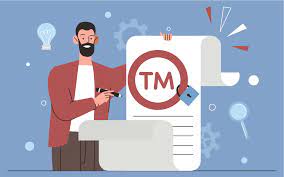Understanding Patent Infringement: What Inventors Need to Know
Did you know that patent infringement cases reached a record high of 5,686 in the United States in 2020? With the increasing number of inventions being patented every year, it’s essential for inventors like you to have a clear understanding of what constitutes patent infringement and how to protect your intellectual property. In this discussion, we will explore the different types of patent infringement, the factors that determine infringement, the potential consequences of infringing on someone else’s patent, and most importantly, how you can safeguard your invention from infringement. So, whether you’re a seasoned inventor or just starting on your innovation journey, this knowledge will empower you to navigate the complex world of patents and safeguard your valuable creations.

What Is Patent Infringement?
What exactly constitutes patent infringement? Patent infringement occurs when someone uses, makes, sells, or imports a patented invention without the permission of the patent holder. In simpler terms, it means using someone else’s patented invention without their consent. It is important to note that patent infringement can occur even if the infringer did not have knowledge of the patent or intentionally copied the invention. The key factor is whether the infringing product or process falls within the scope of the patent’s claims.
To determine if patent infringement has occurred, courts usually undertake a two-step analysis. First, they interpret the claims of the patent to understand the scope of protection it provides. This involves examining the language used in the claims and considering any relevant evidence, such as the patent’s specification and drawings. Second, they compare the accused product or process to the patent claims to determine if there is a “substantial similarity” between them.
If the court finds that the accused product or process falls within the scope of the patent claims and there is a substantial similarity, then patent infringement is established. In such cases, the patent holder may seek remedies, including damages for lost profits, injunctions to stop further infringement, and potentially even attorney’s fees.
Understanding the concept of patent infringement is crucial for inventors and businesses alike. By respecting and protecting the rights of patent holders, innovation and progress can continue to flourish in our society.
Types of Patent Infringement
Now let’s shift our focus to the different types of patent infringement. Understanding these types will help you better navigate the complex world of patent law and protect your valuable inventions. Here are the five main types of patent infringement:
- Literal Infringement: This occurs when someone uses your patented invention without permission, exactly as described in your patent.
- Doctrine of Equivalents: Even if a product or process does not literally infringe on your patent, it can still be considered infringement if it performs substantially the same function in a substantially similar way.
- Contributory Infringement: If someone sells or offers to sell a component that is specifically made to be used in an infringing manner, they can be held liable for contributory infringement.
- Induced Infringement: This occurs when someone actively encourages or induces another party to infringe on your patent.
- Willful Infringement: If a party is aware of your patent and intentionally infringes on it, they may be held liable for willful infringement, which can result in increased damages.
Understanding these types of infringement can help you identify potential infringement situations and take appropriate legal action to protect your patent rights.
Factors Determining Patent Infringement
To determine patent infringement, several key factors are taken into consideration. These factors play a crucial role in determining whether someone has infringed upon another person’s patent rights. The first factor is the scope of the patent claims. The claims define the boundaries of the invention and what is protected. If someone’s product or process falls within the scope of the claims, it may be considered infringing.
Another important factor is the analysis of the accused product or process. A detailed comparison is made between the patent claims and the accused product or process to determine if there are any similarities. The analysis looks at each element of the claims and compares them to the accused product or process to identify any potential infringement.
Additionally, the intent of the accused party is considered. If they knowingly and willfully infringed upon the patent, it can have a significant impact on the determination of infringement.
Furthermore, the commercial impact of the accused product or process is taken into account. If the infringing product or process competes directly with the patented invention and causes financial harm to the patent holder, it strengthens the case for infringement.
Consequences of Patent Infringement
If you infringe upon someone’s patent rights, you may face various consequences. These consequences can have serious implications for your business or personal finances. Here are five potential outcomes that you should be aware of:
- Legal Action: The patent holder has the right to file a lawsuit against you for patent infringement. This can lead to costly litigation and potentially substantial damages if you are found guilty.
- Injunction: The court may issue an injunction, which would prevent you from continuing to produce or sell the infringing product or process. This can severely impact your ability to operate your business.
- Financial Damages: If you are found to have infringed upon a patent, you may be required to pay monetary damages to the patent holder. These damages can be substantial, depending on the extent of the infringement and the value of the patent.
- Reputation Damage: Being accused of patent infringement can harm your reputation as an inventor or business owner. This can make it difficult to attract investors, partners, or customers in the future.
- Loss of Intellectual Property Rights: In some cases, if you are found guilty of patent infringement, you may lose your own intellectual property rights. This can have long-lasting consequences for your ability to innovate and protect your own inventions.
It is essential to understand the potential consequences of patent infringement and take appropriate steps to avoid infringing upon others’ patent rights.
Protecting Your Invention From Infringement
To safeguard your invention from infringement, it is important to take proactive measures to protect your patent rights. One of the most effective ways to do this is by conducting a thorough patent search before filing your application. This will help you determine if any similar inventions already exist, thus reducing the risk of infringement. Additionally, working closely with a qualified patent attorney can ensure that your patent application is drafted properly and provides the strongest protection for your invention.
Once your patent is granted, it is crucial to monitor the market for any potential infringers. Regularly search for products or technologies that may be infringing on your patent and keep a vigilant eye on your competitors. If you suspect infringement, gather evidence such as photographs, product samples, or advertisements that clearly demonstrate the similarities between your invention and the alleged infringing product.
In the event that you discover infringement, it is essential to take immediate action. Consult with your patent attorney to discuss the best course of action, which may involve sending a cease and desist letter to the infringing party or filing a lawsuit to enforce your patent rights. Remember, protecting your invention from infringement requires proactive measures and swift action to ensure that your patent rights are upheld.
Frequently Asked Questions
Can a Patent Infringement Case Be Filed Against a Company Located in a Different Country?
Yes, you can file a patent infringement case against a company in a different country. However, it can be more complex due to jurisdictional issues and international laws. It is important to consult with a legal expert familiar with international patent infringement cases.
Are There Any Exceptions or Defenses That Can Be Used in a Patent Infringement Lawsuit?
In a patent infringement lawsuit, you may have a few exceptions or defenses to help your case. However, it’s crucial to consult with a patent attorney to understand which ones apply to your situation.
How Long Does a Patent Infringement Lawsuit Typically Take to Resolve?
A patent infringement lawsuit typically takes several months to several years to resolve, depending on the complexity of the case and the court’s schedule. It can involve various stages, such as discovery, trial, and appeals.
Can a Patent Infringement Claim Be Made Against Someone Who Unintentionally Infringed Upon the Patent?
So you accidentally stepped on someone’s patent? Well, even if it was unintentional, a patent infringement claim can still be made against you. Ignorance is not always bliss in the world of patents.
What Are the Potential Financial Damages That Can Be Awarded in a Patent Infringement Lawsuit?
In a patent infringement lawsuit, potential financial damages that can be awarded include compensatory damages, which aim to compensate the patent holder for their losses, and possibly even punitive damages for intentional infringement.






